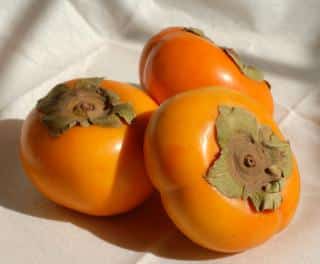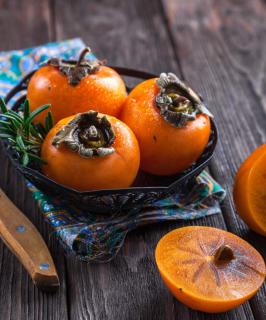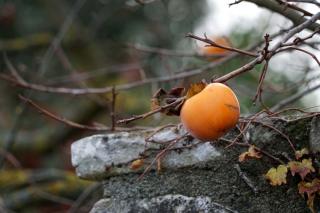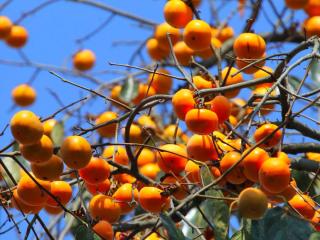

The persimmon tree is a unique tree that produces marvelous fruits in fall.
Persimmon important facts
Name – Diospyros kaki
Family – Ebenaceae
Type – fruit tree
Height – 20 to 50 feet (6 to 15 meters) depending on the species
Exposure – full sun
Soil – well-drained
Foliage: deciduous – Flowering: summer – Harvest: fall/early winter
It’s remarkable thanks to its famous kaki fruits that look like large orange tomatoes.
Best is to plant your persimmon in fall in good garden soil which you can blend all-purpose or planting soil mix into.
You can plant it in spring but you’ll have to increase the watering over the 1st months.
This tree grows rather slowly, so indulge and purchase larger specimens from the start.
 The kaki tree requires only little care, even though certain practices will certainly help spur growth and fruit formation.
The kaki tree requires only little care, even though certain practices will certainly help spur growth and fruit formation.
Whether people look up to it intrigued or puzzled, this tree never goes by unnoticed by persons who haven’t yet seen it before.
Indeed, the remarkable fall-born fruits catch the eye: the kakis are magnetizing in that respect.
 Even after the leaves have fallen, the fruits are still attached to the tree. These famous kaki fruits are orange-red in color and look like tomatoes from up close but make the tree look like a giant clementine tree from afar.
Even after the leaves have fallen, the fruits are still attached to the tree. These famous kaki fruits are orange-red in color and look like tomatoes from up close but make the tree look like a giant clementine tree from afar.
Kaki is edible and actually is very interesting when used in cooking:
 An excellent tree to pair with older constructions: stone masonry, wood cottages, and other ancient buildings will look even nicer with this heirloom fruit tree growing nearby.
An excellent tree to pair with older constructions: stone masonry, wood cottages, and other ancient buildings will look even nicer with this heirloom fruit tree growing nearby.
In modern homes, it will look surprising as well, since the bare tree keeps its fruits in winter, giving it a somewhat abstract appearance many find appealing.
<!– Cooking: delicious recipes with kaki as an important ingredient.–>
 The kaki fruit can be harvested when the epidermis of the fruit loses its green hue and turns orange.
The kaki fruit can be harvested when the epidermis of the fruit loses its green hue and turns orange.
However, don’t eat it immediately because the fruit must still mature and ripen before being ingested.
If you don’t wait, you’ll cringe because of its astringent taste, which disappears after a time of maturing. The kaki is ready to eat when it is soft, actually beyond ripening: this is called bletting.
The kaki is a fruit that is very easy to cook, you can find a great many recipes that are very healthy!